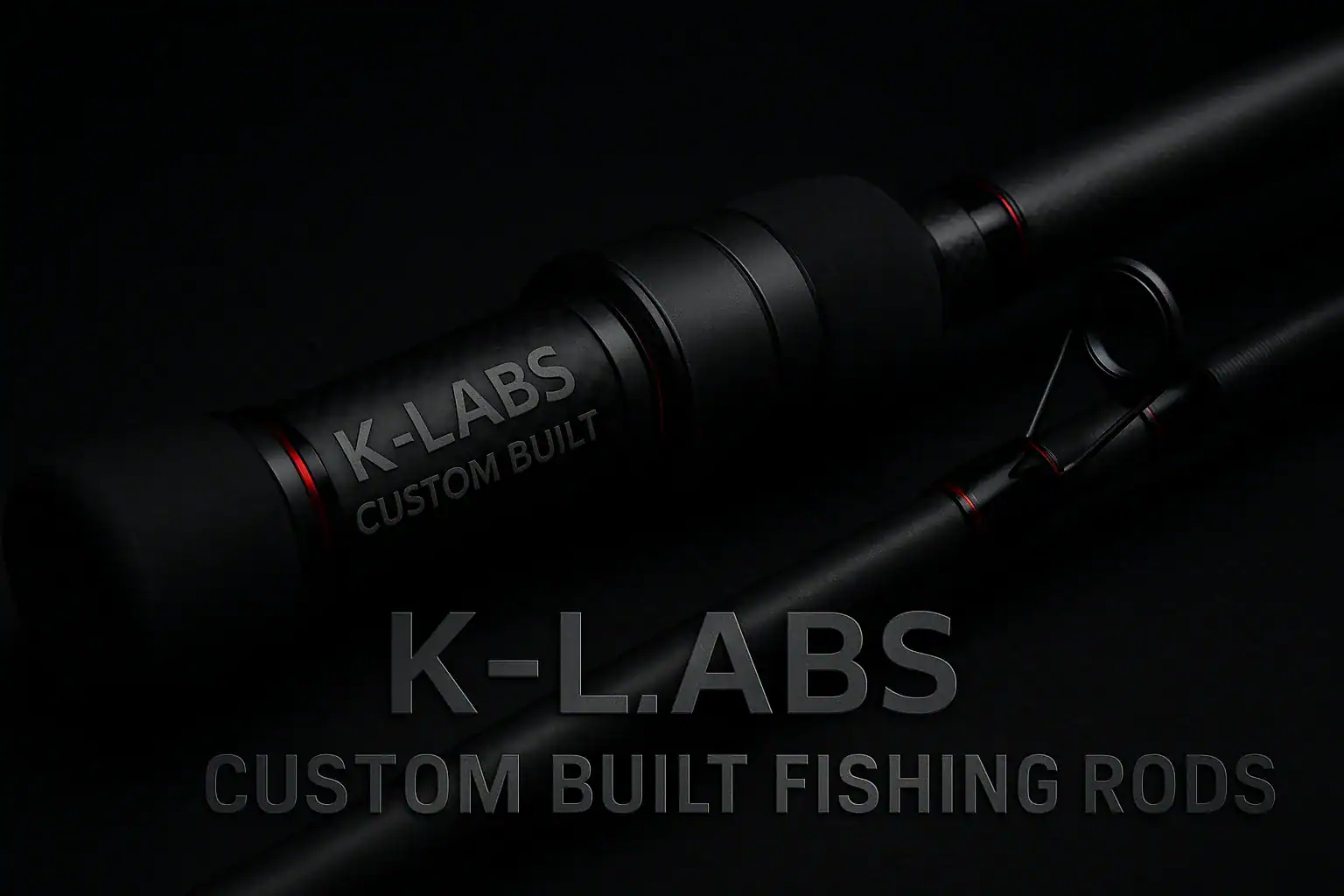K-Labs Custom Built Rods — Rods of Fine Design
Every angler knows the feeling: you cast out a softbait, start working the lure, and something doesn’t feel right. The rod feels numb. You can’t feel the lure. Little bumps don’t register. The connection isn’t there. The rod feels “dead.”
This is one of the most common complaints in softbait fishing — especially in NZ where wind, current and drift speed demand a highly responsive rod. But very few anglers actually understand why a rod feels dead, or what causes that dull, lifeless sensation. This guide breaks down the real reasons, the science behind it, and what separates a lively softbait rod from one that feels blind.
1. Dead Feel Comes From Slow Recovery — Not Softness
Many anglers assume a dead-feeling rod is “too soft.” In reality, softness and deadness are not the same thing. A rod feels dead when it has slow recovery — meaning after each lift, twitch or cast, the blank continues to wobble instead of snapping back instantly.
That wobble sucks energy out of the system and kills sensitivity. A rod with fast recovery feels crisp and alive. A rod with slow recovery feels dull, laggy and lifeless.
2. Heavy Guide Trains Kill Feel Instantly
Guides add weight. Weight slows vibration. And vibration is what you feel.
When a rod has:
• oversized heavy guides
• long, high frames
• too many grams at the tip
• poor reduction layout
…it becomes slow to respond and slow to settle.
This is one of the biggest reasons cheap rods feel dead. The blank might be decent — but the guide train strangles it.
3. Bulky Grips Muffle Every Bite
Most anglers don’t realise how much the grip affects feel. Your hand is the receiver. If the handle deadens vibration, the blank could be incredible and you’d still feel nothing.
Dead feel is often caused by:
• thick EVA that absorbs vibration
• soft material that compresses
• steps, gaps and discontinuities between reel seat and grips
• generic “stacked” parts instead of integrated shaping
When grips are shaped to flow directly into the reel seat with no transitions, sensitivity increases dramatically.
4. Poor Blank Engineering = Lifeless Rod
Blank tonnage doesn’t tell you much. Tonnage affects stiffness, not sensitivity. A well-designed 24T or 30T blank can feel sharper than an average 40T blank.
Dead feel often comes from:
• heavy wall thickness
• inefficient fibre layout
• slow tapers
• excess resin
• low-quality carbon that dampens fine vibration
High tonnage is only good when the engineering behind it is good.
5. Dead Feel Shows Up More in NZ Than Anywhere Else
Our conditions expose bad rods faster than warm-water, calm-weather markets. NZ softbaiting typically involves:
• wind creating extra line belly
• fast drifts
• deeper water
• heavier jigheads
• line tension changing constantly
A rod that feels OK in a shop feels dead on the water in NZ conditions. The rod must be responsive enough to show micro-changes in tension — that’s what lets you feel bait behaviour and subtle takes.
6. Cheap Rods Feel Dead Because They Stack Problems
Lower-end rods usually combine:
• sluggish blanks
• heavy guides
• big soft grips
• sloppy reel seat transitions
• poor recovery
Each issue reduces feel. Together, they kill it.
This is why anglers using high-quality setups consistently detect more bites, miss fewer fish and maintain better lure control. Quality gear isn’t about prestige — it’s about information.
7. How to Fix a Dead-Feeling Rod
If your current rod feels dead, you may not need to replace it immediately. A few changes can help:
• Use lighter braid (less line belly = better feel)
• Shorten leader (long leaders dampen feedback)
• Balance your reel to shift feel into the hand
• Reduce jighead weight on calmer days
But if the blank is slow or the guide train is heavy, the rod will always have a ceiling.
8. How to Choose a Rod That Feels Alive
Ignore the stiffness. Ignore the marketing tonnage. Ignore the “sensitive” stickers. Look for:
• fast recovery, not brute stiffness
• lightweight guides, not bulky frames
• seamless grip-to-seat transitions
• crisp response when you tap the blank
• a rod that doesn’t wobble after a small lift
A lively rod gives you information. A dead rod hides everything.
Conclusion
Most rods feel dead not because they’re soft — but because they’re poorly engineered, poorly built, or slowed down by heavy components. Sensitivity isn’t a luxury in NZ softbaiting — it’s a fish-catching advantage.
A rod that feels alive helps you detect hits earlier, work your bait more precisely, and fish with far more confidence.
K-Labs Custom Built Rods — built for connection, feel and total control.
🔥
FAQ
Q: Why does my softbait rod feel dead or unresponsive?
A: Dead feel usually comes from slow recovery, heavy guides, bulky grips or poor blank engineering, all of which mute vibration.
Q: Does rod stiffness equal sensitivity?
A: No. Stiff rods can actually feel numb. Sensitivity is the rod’s ability to transmit vibration and settle quickly after movement.
Q: Can cheap softbait rods ever feel sensitive?
A: Some can feel OK, but most use heavy components and slower blanks that naturally limit sensitivity.
Q: How can I improve feel on my current setup?
A: Use lighter braid, shorter leaders and better balance. These can help — but blank and guide weight are the biggest factors.
